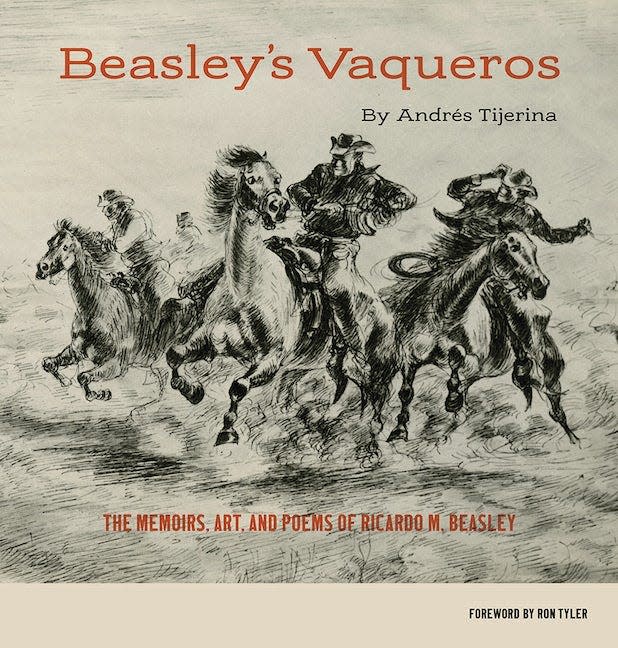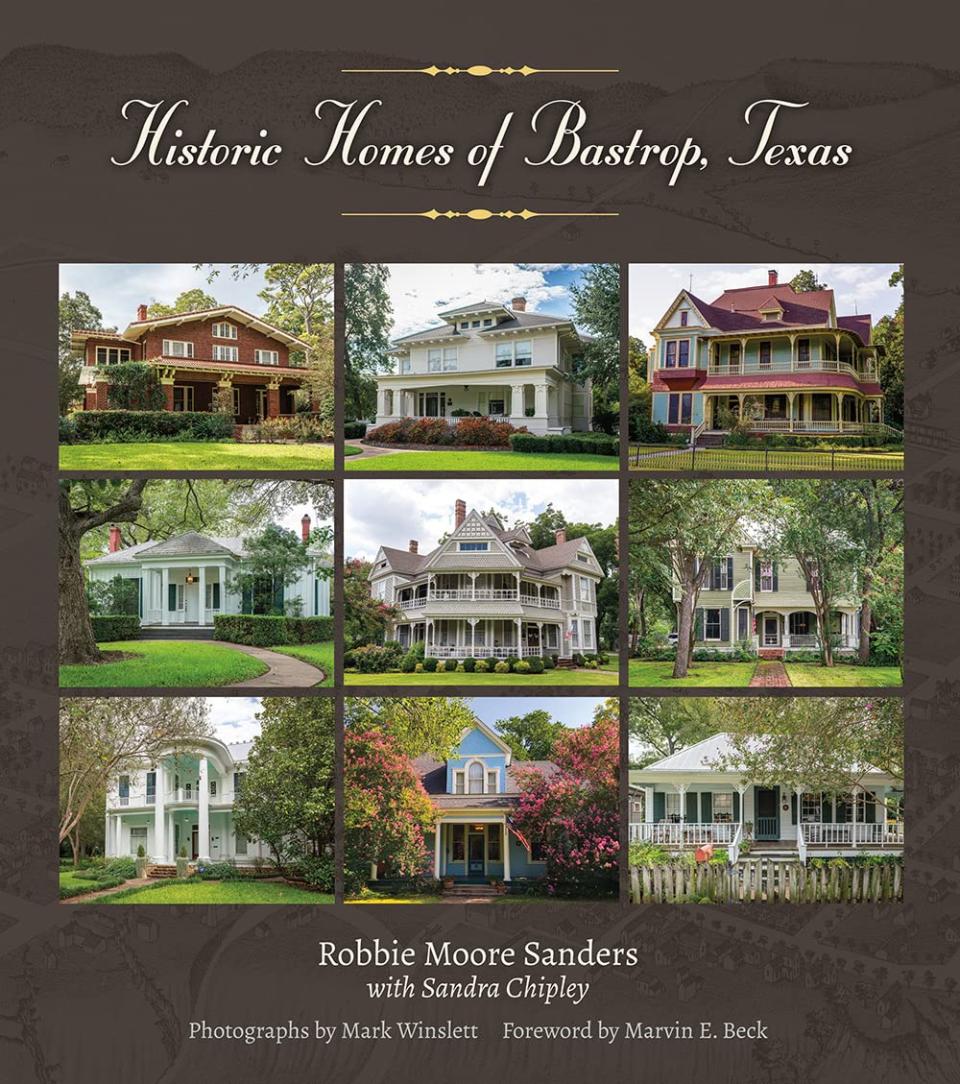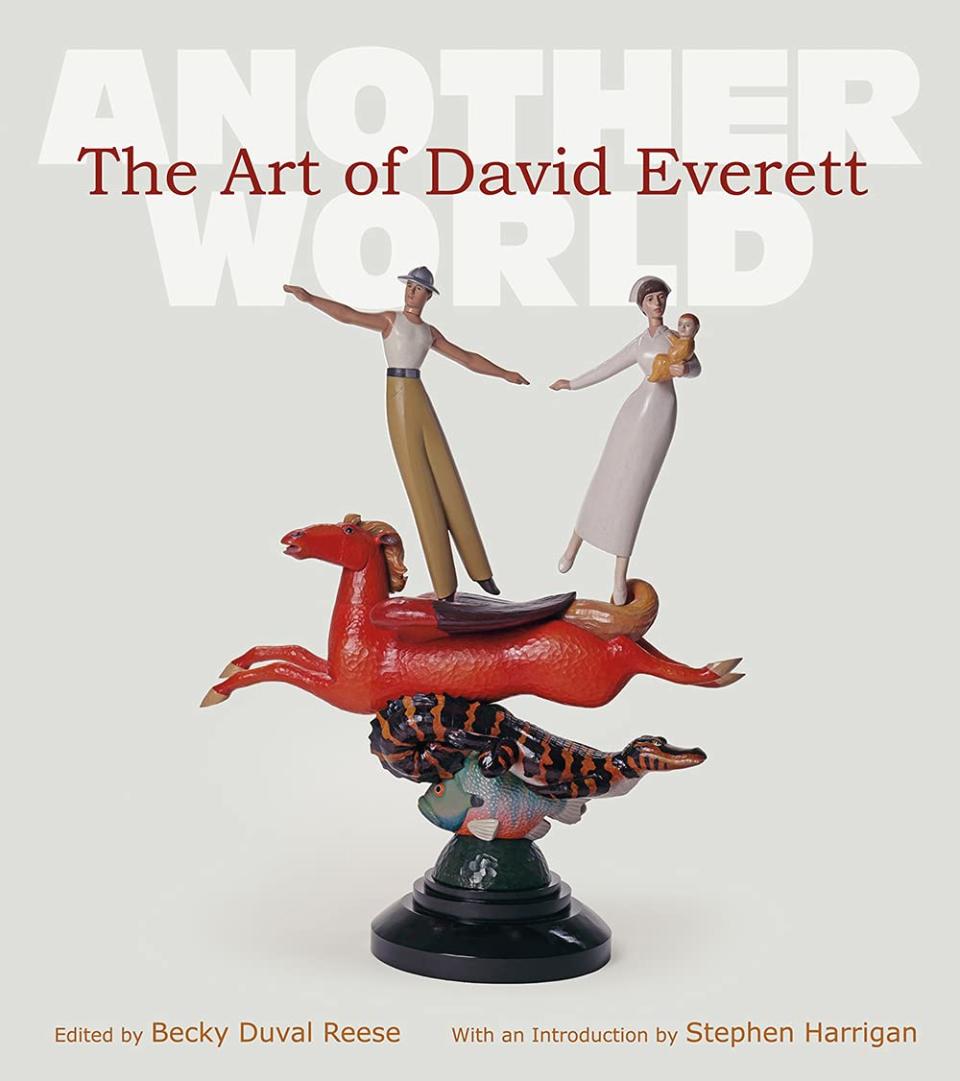10 gift books for people who love Texas culture

I live in a house of books.
No wonder my first impulse during the holidays is to give new books to loved ones.
For readers of Think, Texas, I've selected 10 titles about our state, almost all published in 2022.
Some are big picture books. Others are historical or fictional. All are well written.
I reviewed the latter five books on this gift list as part of previous columns. I continue to treasure these volumes and quote from my past praise.
'Beasley's Vaqueros: The Memoirs, Art and Poems of Ricardo Beasley' by Andrés Tijerina (Texas State Historical Association)
When one of the state's great historians meets a perfect subject, you pay attention. Since the 1970s, Tijerina, who recently retired as professor at Austin Community College, has documented the Tejanos of South Texas — as well as the origins of American democracy, among other subjects — in book after book. He's not slowing down.
In the 1990s, Tijerina ran across a book by Ricardo Beasley, an artist and poet who did not romanticize vaqueros as much as he documented them in high style. The historian immediately recognized that this eyewitness to their rough work from 1940 to 1980 not only captured the danger and dynamism of ranch life in pen and ink; Beasley also understood how all this was connected to the original Tejano cowboys of the 18th and 19th centuries.
Tijerina includes a long, translated interview with Beasley alongside the original Spanish, and he provides context regarding the Mexican Americans who organized against the Anglo power structure during the 20th century.

'The Art of Texas State Parks: A Centennial Celebration, 1923-2023' by Andrew Sansom and Linda J. Reaves (Texas A&M University Press)
Andy Sansom is a god of Texas conservation. Former director of the Meadows Center for Water and the Environment at Texas State University, he also headed the Texas Parks and Wildlife Department and the Texas Nature Conservancy.
Right there, three of the most effective protectors of wild Texas.
For this book, he teamed with Linda Reaves, an art expert and collector, to celebrate the 100th anniversary of the Texas State Parks system by curating art about the parks. (I hope to revisit this happy centennial in the coming year.)
This is, first and foremost, a coffee-table book. In our house, it sat for months on a side table near our sofa, and during quiet moments of an otherwise hurried day, I'd page through it for peace and renewal. Some of the artists — Margie Crisp, Fidencio Duran, William B. Montgomery, Gordon Fowler, Maylou Flato — will be familiar to casual fans of Texas art. Others are worth discovering for the first time.
This book contains valuable historical background and a nifty map of the parks system.
'At the Table with LBJ & Lady Bird: History, Humor and True Texas Recipes' by Jean E. Schuler (TCU Press)
This is the most elaborately devised Texas book this year. Jean Schuler, who worked as a volunteer at the LBJ Presidential Library in Austin, dug into the archives for Lady Bird's collection of recipes, some originally devised by family cook Zephyr Wright.
That was just for starters.
If these recipes had been presented plainly on the page with a few illustrations and anecdotes, "At the Table" would have turned out a valuable cookbook. Schuler and her team at TCU Press went two steps further: Whole pages are covered with Schuler's playful drawings, while the text portions are presented as typewritten notes.
It ends up looking and performing like a scrapbook, personal and inviting. Thankfully, the page-filling decor does not impede legibility. I want to make these dishes. And while I can take a break from cooking, I'll nibble on the history and the humor.

'Historic Homes of Bastrop Texas' by Robbie Moore Sanders with Sandra Chipley and photographs by Mark Winslett (Texas A&M University Press)
Are you the type — I am — who, after visiting the historic downtown of any Texas spot, you head directly to the old residential neighborhoods nearby? Best toured on foot, these leafy districts are home to the stately mansions, cozy bungalows and modest cottages that housed all slices of the town's past generations.
One of the oldest towns in Central Texas, Bastrop traces its roots as a settlement back to 1804. The authors of this handsome volume document almost 100 homes, mostly built between 1835 and 1920. Each entry includes an architectural assessment along with a short history of the families who were lucky enough to live in these houses, which are lovingly photographed by Mark Winslett.
I look forward to my next day trip to Bastrop, so I can visit — or revisit — these treasures.

'Another World: The Art of David Everett' edited by Becky Duval Reese (Texas A&M University Press)
I've admired the work of Texas sculptor David Everett since the 1980s. Perhaps you've seen his stacked animal and human figures carved from wood, streamlined, abundantly hued and showing the marks of his tools. These were inspired by the wildlife he observed growing up on the Big Thicket side of Beaumont.
In a small, cozy studio west of the Capitol, Everett still draws with luscious attention to detail and creates bold woodcuts that put the state's natural wonders front and center. His small, smooth bronzes are to be cherished. Former museum curator Becky Duval Reese put together this long overdue tribute to Everett's work; author Stephen Harrigan, who appreciates the artist's subtly and humor, contributed the introduction.
'Texas Dives: Enduring Neighborhood Bars of the Lone Star State' by Anthony Head with photographs by Kirk Weddle (Texas A&M University Press)
As I wrote in an Oct. 24 column, "This book is solid gold. ... San Marcos journalist Anthony Head devotes his savvy insights and layered prose to dive bars in 12 of the state's towns and cities.
"Austin photographer Kirk Weddle, using available light to powerful effect, gives depth and dignity to each bartender, customer and bar scene.
"I've read several of the book's entries again and again, and have already planned judicious stopovers. ... I urge you to purchase or borrow 'Texas Dives' and raise a glass to this enduring tradition."
'Unsettled Land: From Revolution to Republic, the Struggle for Texas' by Sam W. Haynes (Basic Books)
I wrote in an April 18 column: "Don't trust anyone who tells you that they know all the answers to Texas history. Especially not about the era before, during and after the Texas Revolution of the 1830s. After all the reverential myth-making and sensationalistic myth-busting, Texas in the early 19th century still comes off as a scene of absolute anarchy.
"Hundreds of significant players changed sides among dozens of different causes. Most had no idea what others were thinking or doing because the distances were so wide and land routes so rough.
"The reader comes away (from this book) with the sense that there was no single proximate cause for the Texas Revolution. Yet the conflict had a profound effect on an informally multiracial society that became increasingly dominated by the Anglo classes."
Texas history, delivered to your inbox
Click to sign up for Think, Texas, a newsletter delivered every Tuesday
'Bad Mexicans: Race, Empire & Revolution in the Borderlands' by Kelly Lytle Hernádez (Norton)
As I wrote in a Sept. 5 column, "In her latest volume, Hernández uncovers the parts played by anarchists, socialists and liberals in overthrowing President Porfirio Díaz, the general who defeated the French at the decisive Battle of Puebla in 1862, and who had become Mexico's de facto dictator over the course of seven elections and 31 years of rule. He resigned in 1911 after losing several battles against a loose coalition of revolutionaries."
"Hernández helpfully explains how Díaz evolved from a liberal to an autocrat, and how his forces, official and informal, vigorously smashed down any threat to his power, whether by Indigenous tribes, labor activists, or regional political leaders. He was helped by ultra-wealthy Americans whom Díaz had allowed to sweep up millions of acres of Mexican land while dominating the country's railroads, mines and oil production.
"Those powerful Americans, in turn, put enormous pressure on both the Mexican and American governments to suppress dissent and any action against their material interests."
'Last Gangster in Austin: Frank Smith, Ronnie Earle and the End of the Junkyard Mafia' by Jesse Sublett (University of Texas Press)
From a June 20 column: "Author and musician Jesse Sublett's riveting true-crime story reads like a classic noir novel. It uncovers a seamy 1970s Texas underworld that you might not know existed, unless you have already read his equally revealing '1960s Austin Gangsters,' published in 2015.
In that book, Sublett profiled the Overton Gang, which pulled off bank burglaries across the state, while they ran prostitution and smuggling rings. Timmy Overton of Austin and Jerry Ray James of Odessa, former football players, were sometimes allied, at other times at loggerheads with infamous Austin madam Hattie Valdes.
"Although it also chronicles a criminal empire that fanned out to the rest of Texas, "Last Gangster in Austin: Frank Smith, Ronnie Earle and the End of the Junkyard Mafia" is more tightly focused and produced. Not a comma is out of place. If this story is not made into a feature film — not just TV true-crime fodder — that in itself would be a crime."
'The Leopard Is Loose: A Novel' by Stephen Harrigan (Knopf)
In a March 22 column, I wrote: "Hands down, Stephen Harrigan is one of the top writers in the state of Texas. Modest and generous, the novelist, journalist and screenwriter would probably disapprove of any such grand statement.
"His latest novel, 'The Leopard Is Loose: A Novel,' is not set in Texas, although the state appears always just beyond the horizon. The Oklahoma City of the 1950s sounds a lot like Dallas, Fort Worth or even, in next-door Louisiana, Shreveport, where I spent a chunk of the 1950s.
"Harrigan was inspired by the Feb. 25, 1950, escape of a leopard from the Lincoln Park Zoo in Oklahoma City. Frenzied citizens formed posses. Parents kept terrified children behind closed doors. And tensions escalated until the posthumously named 'Leapy the Leopard,' who had jumped 18 feet from his zoo enclosure, died from eating poisoned meat planted not far from his zoo lair."
Michael Barnes writes about the people, places, culture and history of Austin and Texas. He can be reached at mbarnes@statesman.com.
This article originally appeared on Austin American-Statesman: Books about Texas history and culture to gift in 2022

